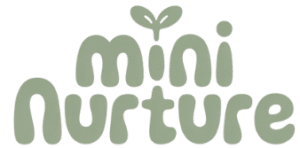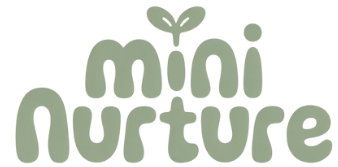Preschool activities about “My Family” help young children learn about the people who are important in their lives. These activities support social skills and emotional growth.
Engaging in family-themed activities helps preschoolers understand family roles while building a sense of belonging and pride.

Many of these activities involve simple crafts, stories, and games that introduce basic concepts like names, relationships, and traditions. Hands-on projects like making family trees or creating puppets encourage creativity and make learning about families fun and meaningful.
These activities also help develop skills like counting, matching, and fine motor control, all within a familiar and comforting theme. Preschoolers benefit when family themes are part of daily lesson plans because it connects learning with their real-life experiences.
These activities can be adapted to fit different family structures and cultural backgrounds, making them inclusive and relevant for every child.
Key Takeways
- Family-themed activities promote social and emotional learning.
- Creative projects support skill development and family understanding.
- Incorporating family topics makes lessons relatable and engaging.
Exploring Family Through Preschool Activities

Preschool activities about family help children understand who their family members are and how they connect. These activities include creative projects, play setups that mimic real family roles, and guided worksheets that build key skills.
Art and Craft Projects
Art and craft projects let children express their feelings about family. They might make family trees by drawing or using photos to show family members.
This helps kids see how their family is built. Creating family photo albums or collages lets preschoolers recognize faces and learn names.
Using crayons, paints, or markers, they develop fine motor skills and creativity. When kids draw family members or create puppets, they explore relationships and roles within a family.
Family-Themed Play Centers
Family-themed play centers provide hands-on ways for children to practice social skills. They include role-playing setups like a kitchen, grocery store, or doctor’s office where kids can act out family scenarios.
In these centers, children take turns being parents or siblings, learning communication and cooperation. They practice solving simple problems and expressing feelings.
The play spaces often have props like dolls, utensils, and clothing. These familiar objects encourage imagination and help children connect activities to their own family experiences.
Interactive Worksheets and Printables
Worksheets focused on families support literacy and thinking skills. Activities may ask children to match family member pictures, complete simple puzzles, or fill in family tree blanks.
Printables might include “All About Me” sheets where children list family members and favorite family activities. These exercises improve language and self-awareness.
Many worksheets also cover emotions by showing how family members might feel in different situations. This builds social understanding while reinforcing family bonds.
More ideas for activities for preschoolers can be found at ohmyclassroom.com.
Creative Ways to Learn About Families

Children benefit from hands-on activities that help them understand family relationships and roles. These activities reinforce how each family is unique and show different ways people connect with each other.
Using simple tools like paper, puppets, and play can engage young learners.
Building Family Trees
Creating a family tree helps children visualize their relatives and see how everyone is connected. Teachers or parents can provide family tree templates with spaces for names and pictures.
Children fill in these templates with parents, siblings, grandparents, and other family members. This activity encourages kids to ask questions about their family history and recognize different family roles.
It can be as simple as a paper chart or more artistic with drawings and photos glued on. Building a family tree also supports language skills, as children talk about who is in their family and how they relate.
Roleplay and Dramatic Play
Roleplay lets children act out family situations and explore different feelings and responsibilities. Setting up a small play area with items like toy kitchens, phones, or dress-up clothes encourages pretend family interactions.
Dramatic play helps children understand daily family life and the roles each person plays. For example, one child might pretend to be a parent cooking dinner, while another acts as a sibling or caregiver.
This kind of play boosts social skills and empathy while making family learning fun and active.
Creating Family Puppets
Making family puppets is a creative way to discuss family members and their personalities. Children can use socks, paper bags, or craft sticks to build puppets that represent each person in their family.
This hands-on craft brings the family to life and lets children tell stories about their family members. Puppets can be decorated with markers, yarn for hair, and fabric scraps for clothes.
Using family puppets during circle time encourages sharing and improves communication skills.
Incorporating Family Themes Into Lesson Plans

Using a family theme in preschool lesson plans can help children connect learning with their everyday lives. It makes activities relatable by including familiar people and routines.
This approach supports early skills in reading, math, and social development while respecting different family structures.
Developing a Family Theme Curriculum
A well-designed family theme curriculum focuses on real-life connections. Teachers can start by gathering information about the children’s families to create relevant content.
Activities might include drawing family portraits, discussing family roles, or sharing family stories. Planning should balance creative, hands-on tasks with conversations about emotions and responsibilities.
Including routines like meal preparation or cleaning up helps children understand daily family life. Using visuals such as family trees and puppets encourages recognition and pride in their own families.
This approach boosts social and emotional skills along with cognitive development.
Integrating Literacy and Math
Family themes can build literacy skills through activities like reading family-related books or making “My Family” mini-books. Practicing writing family members’ names supports penmanship and vocabulary.
Math lessons use counting and sorting with household objects or family member images. Pattern recognition can be taught using family counters in different colors representing family roles.
Simple sequencing activities, like arranging family photos by age, help develop logical thinking. Teachers can include printable worksheets that involve matching family words or counting family items.
These activities tie math and literacy to the children’s environment, making learning more meaningful.
Adapting Activities for Diversity
Preschool lesson plans with a family theme must reflect the variety of family types in the classroom. Activities should respect different sizes, structures, and cultural backgrounds.
Teachers can use open-ended projects like creating family trees that accommodate single parents, grandparents, or foster families. Discussions about what makes families unique encourage understanding and empathy.
Providing materials that represent diverse skin tones and family setups promotes inclusion. Adapting crafts and stories to be flexible lets every child feel seen and valued in the learning process.
For more ideas on creating engaging and diverse family-themed preschool lesson plans, see 65+ Family Theme Preschool Activities.
Fun and Easy Family Projects for Preschool

These activities encourage creativity while helping preschoolers learn about family members and roles. They are simple to set up and use materials that are easy to find.
Kids can make hands-on projects that represent their family and practice fine motor skills.
Cardboard Tube Family Creations
Using cardboard tubes, children can build a small version of their family. Each tube is decorated with paint, markers, yarn for hair, buttons, and googly eyes to create different family members.
This craft helps kids recognize family roles by making each member unique. Tubes can represent parents, siblings, or pets using different colors or sizes.
It encourages imaginative play and storytelling about the people in their family. The project is easy to prepare and clean up, making it ideal for home or preschool.
It also supports fine motor skill development while reinforcing family connections through art.
Printable Family Activities for Home
Printable activities include family trees, matching games, and coloring pages focused on family members. These printables often feature simple tasks like tracing family names, cutting shapes, or coloring family symbols.
Parents can use these at home to strengthen literacy and motor skills while teaching family concepts. Some printables prompt children to fill in details about family members and share stories.
These resources are affordable and accessible and provide structured ways for children to practice handwriting, reading, and recognizing family roles in a fun format.
For examples of printable family activities, see the collection at Teaching Littles.
Frequently Asked Questions

Many family-themed preschool activities focus on simple crafts, songs, and games that teach about family roles and relationships. These activities often involve hands-on learning and encourage children to share about their own families.
Resources for free or printable activities are widely available online.
What are some family-themed craft ideas for preschoolers?
Preschoolers can create handprint family trees, paper plate portraits, or collage pictures using family photos. Simple crafts like making family member puppets or decorating frames for family photos are also popular.
These crafts help children recognize family members and express their feelings about home.
How can I incorporate a family theme into activities for toddlers?
Toddlers benefit from sensory play with family-related items, such as sorting family member dolls or matching pictures. Singing songs about family and reading simple family books helps build understanding.
Activities should be short, hands-on, and based on everyday experiences to keep toddlers engaged.
Which family activities are appropriate for a preschool curriculum?
Activities like family role play, shared storytelling about family routines, and family-themed games help preschoolers learn social skills. Learning centers can include puzzles with family words or counting games using family figures.
Including books and songs about families supports literacy and language development.
Where can I find free family-themed activities for preschool students?
Several websites offer free printable worksheets, craft instructions, and lesson plans focused on families. Trusted resources include preschool activity sites that curate family theme materials for parents and teachers.
Parents and educators can download materials that cover a variety of skills like fine motor, math, and literacy.
Can you suggest family-related activities suitable for kindergarten?
Kindergarteners can do family interviews, create family scrapbooks, or write short stories about family members. Group projects like making a family tree mural encourage collaboration and creativity.
These activities promote social studies understanding and language skills.
What content should be included in a family lesson plan for preschoolers?
A comprehensive lesson plan usually includes learning goals about family roles and diversity. It also features hands-on crafts, songs, books, and simple games.
It should promote social-emotional skills and language development. Respect for different family types is important as well.
Including sensory and motor activities helps keep preschoolers engaged.
For more detailed activities and ideas, visit 20 Family Activities For Preschool and The 50 Best Preschool Activities for FAMILY Theme.

